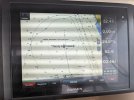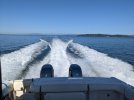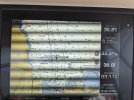- Joined
- Sep 2, 2014
- Messages
- 17
- Reaction score
- 3
- Points
- 3
Good day everyone! I recently repowered my 2003 Grady Express 33 from a pair of DF300s to the new Suzuki 350 duoprop and the performance is great so far. I run them around 4,300 - 4,350 RPM at about 34 MPH burning around 26 GPH (1.3 MPG). A question I have is the boatyard put the engines on near the top of the bolt pattern (high) reasoning that the duoprop would be fine because of the additional bite and the reduced drag would be advantageous. The problem is, if I trim them up, cavitation occurs, so basically you can't trim the motors up to adjust the trim of the boat. I know they need to come down, just wondering if anyone else has installed these on an Express 33. My DF300s were all the way down on the transom and gave lots of trim options. Anyone with this boat knows they can bow steer if not trimmed out properly, which this boat is doing a bit of right now. Generally, love the new engines though...
Thanks!
Thanks!







